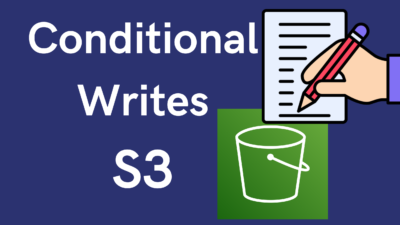Key metrics for System Reliability
In the realm of Site Reliability Engineering (SRE), ensuring the reliability and scalability of services is paramount. A key component of this discipline is effective monitoring, which brings us to the concept of Golden Signals.
Golden Signals are essential metrics that enable teams to swiftly identify and diagnose system issues. This blog post delves into what these signals are, their significance, and how they can be leveraged to maintain robust and healthy systems. By understanding and utilizing Golden Signals, SRE teams can enhance their ability to keep services running smoothly and efficiently.
Understanding the Importance of Golden Signals in SRE
SRE principles streamline monitoring by focusing on four key metrics—latency, errors, traffic, and saturation—collectively known as Golden Signals. Instead of tracking numerous metrics across different technologies, focusing on these four metrics helps in quickly identifying and resolving issues.
Latency
Latency measures the time it takes for a request to travel from the client to the server and back. High latency can lead to a poor user experience, making it crucial to monitor this metric closely. For instance, in web applications, latency typically ranges from 200 to 400 milliseconds. By keeping an eye on latency, teams can detect slowdowns early and take swift corrective action.
Errors
Errors track the rate of failed requests. Not all errors are created equal; for example, a 500 error (server error) is more severe than a 400 error (client error) and often requires immediate intervention. Monitoring error rates helps teams identify spikes and underlying issues before they escalate into major problems.
Traffic
Traffic measures the volume of requests coming into the system. Understanding traffic patterns is essential for preparing for expected loads and identifying anomalies, such as DDoS attacks or unplanned spikes in user activity. For example, if your system is designed to handle 1,000 requests per second but suddenly receives 10,000, this surge could overwhelm your infrastructure if not properly managed.
Saturation
Saturation is about resource utilization, showing how close your system is to reaching its full capacity. Monitoring saturation helps avoid performance bottlenecks caused by overuse of resources like CPU, memory, or network bandwidth. Think of it like a car’s tachometer: once it redlines, you’re pushing the engine too hard, risking a breakdown.
Correlation Between the Four Golden Signals
Latency and Errors
Relationship: A direct correlation exists between latency and errors. High latency often leads to timeouts, failed requests, or degraded user experience.
• A slow database query increases request latency, causing timeouts (5xx errors).
• If an API takes longer to respond due to a load balancer issue, clients may retry requests, further increasing load and latency.
Observability Insight:
• Track latency percentiles (P50, P90, P99) to detect degradation before errors occur.
• Analyze error logs alongside latency trends to understand failure patterns.
Traffic and Latency
Relationship: As traffic increases, system resources are strained, leading to higher latency. However, an efficient system should handle increased traffic without significant latency spikes.
• A sudden traffic surge can overwhelm application servers, causing increased response times.
• High traffic can lead to queuing in databases, introducing processing delays.
Observability Insight:
• Implement auto-scaling based on real-time traffic patterns to mitigate latency issues.
• Monitor queue depths in backend systems to detect potential slowdowns before they escalate.
Traffic and Errors
Relationship: High traffic can cause an increase in errors, especially if the system isn’t scaling appropriately.
• A sudden influx of users (e.g., during a product launch) can lead to database connection exhaustion, resulting in failed queries.
• If an API has a rate limit and receives excessive traffic, it may return HTTP 429 (Too Many Requests) errors.
Observability Insight:
• Set up alerts on error rates relative to traffic to detect abnormal failure patterns.
• Use rate limiting and circuit breakers to prevent cascading failures during high load.
Saturation and Latency
Relationship: A saturated system results in degraded performance, causing latency spikes.
• A CPU-intensive service running at 95% utilization can slow down request processing, leading to higher latency.
• High memory usage may cause excessive garbage collection, increasing response times.
Observability Insight:
• Track resource utilization trends and define capacity thresholds for proactive scaling.
• Use distributed tracing to identify bottlenecks causing high resource consumption.
Saturation and Errors
Relationship: When a system is fully saturated, it cannot process additional requests, leading to increased error rates.
• A disk I/O bottleneck may prevent database writes, leading to application failures.
• A network bandwidth-saturated server may drop packets, resulting in failed API calls.
Observability Insight:
• Implement graceful degradation techniques like load shedding and failover mechanisms to reduce error impact.
• Use chaos engineering to test system behavior under extreme saturation conditions.
The Four Golden Signals provide a comprehensive view of system health, but their true value lies in understanding their correlation. By analyzing how traffic, latency, errors, and saturation interact, SREs can proactively identify bottlenecks, prevent incidents, and improve system resilience.
In SRE, the key is not just monitoring these signals but understanding their relationships to drive continuous improvement.



